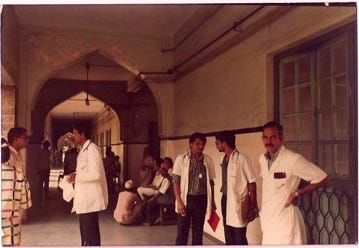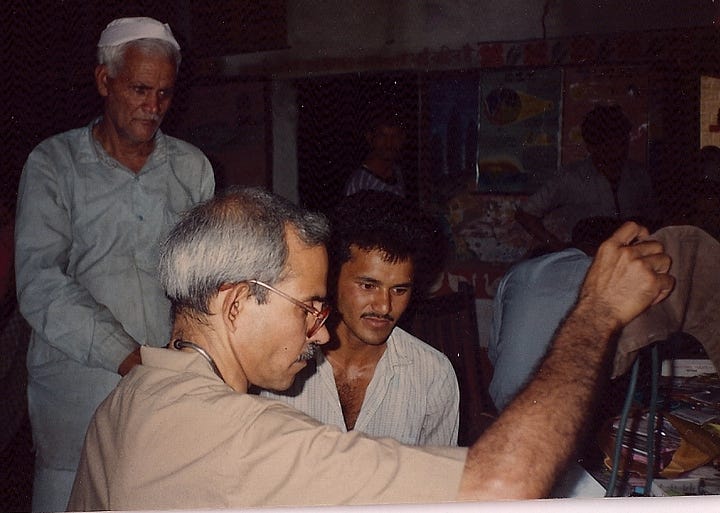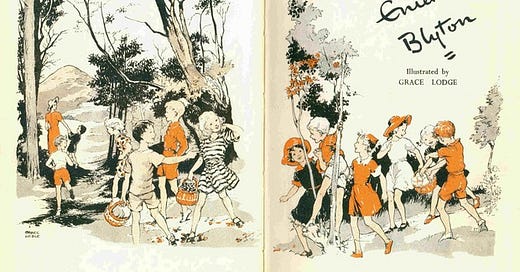I wrote a booklet of stories when I was six. Ridiculous stories like ‘The Stinking Sink’ and ‘The Whistling Goat’ that made my parents laugh and many other people look at me incredulously, as if they couldn’t decide if I was too clever or too weird. These stories, handwritten and sometimes illustrated, took everyday experiences and turned them into fantasy.
For example, if my memory serves me right, the Whistling Goat was a pet of two naughty children who were careless enough to let it swallow their whistle. The distressed children feared their goat would need to be cut open, but the lucky goat was saved by technology. An endoscope extracted the whistle (and a previously swallowed coin) from the goat and they all lived happily ever after.

The story was inspired, a little bit by Enid Blyton, of course, which we all consumed copiously back in the ‘80s, but mostly by a conversation I overheard when Daddy took me to a plastic tube manufacturer to discuss the possibility of them supplying tubes for imported endoscopy machines. Daddy was a medical doctor who specialised in stomach disorders (a gastroenterologist, the tiny me would proudly say) working in a large public hospital in Mumbai. At the time, in the mid 1980s, endoscopy as a procedure for seeing what was inside people’s digestive systems was gaining popularity and vastly improving diagnostics and treatment options. But operating an endoscopy setup was expensive because the ancillary parts were being imported. Daddy, always the optimistic problem-solver, wanted to explore cheaper and localised alternatives.
Sitting in the dingy air-conditioned office, I was privileged to witness Daddy’s fantastic story telling where he broke down the complexities of medical technology in very simple terms for his audience, including the tiny me. It went something like this: an endoscope is basically a tube with a camera going into the patient’s body through the mouth, down the oesophagus and deeper inside the stomach, intestines etc. The video generates a feed that enables doctors to detect ulcers, bleeds and all manner of abnormalities, and then prescribing better treatments. Somewhere in that conversation was a nugget about an endoscope being used to retrieve a coin stuck inside someone’s body!


This is what my six year old brain gleefully latched onto. I remember I could not get out of my mind the visual of a tube snaking its way into someone’s body, and sucking out ‘foreign’ objects. In my story, I applied these ideas to a pet goat, merging my newly acquired technological knowledge into an idyllic Blyton-esque world of naughty children with cute pets strolling inside idyllic woods and enjoying summertime picnics! By the way, my parents came to know that I had written such a story only when my teacher complained that I was using very long and complicated words in class. Understandably, ’endoscopy’ and ‘gastroenterologist’ were out of the Grade 1 syllabus!
I no longer have this booklet of stories. I think an uncle of mine took it to show my cousins and it probably lay in someone’s bookshelf in Goa for decades till the junk was thrown away! I don’t mourn its loss but I do wonder why I forgot that I was already a writer at six.
Have you also, like me, walked away from an early interest, only to return to it decades later? Have you also, like me, trundled about the world doing things the world told you were important, only to find yourself right back where you started, alone with your thoughts and imagination? Have you also, like me, waited for others to tell you what you are good at, while knowing it all along?
Today, in this moment, I want the confidence to believe in me, to ask myself the difficult questions and be comfortable with silence as the response.




I think these children stories from your past must be revisited illustrated and made available to the 6 year olds of today ❤️
Such a nice story. We think in such beautiful and unique ways as children. Thanks for writing this Mukta. Made me reflect on my childhood stories too.